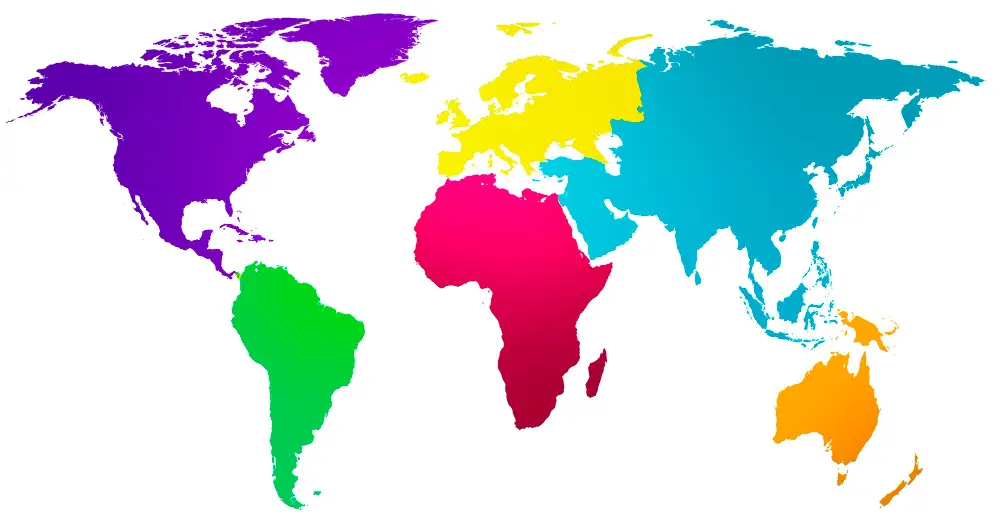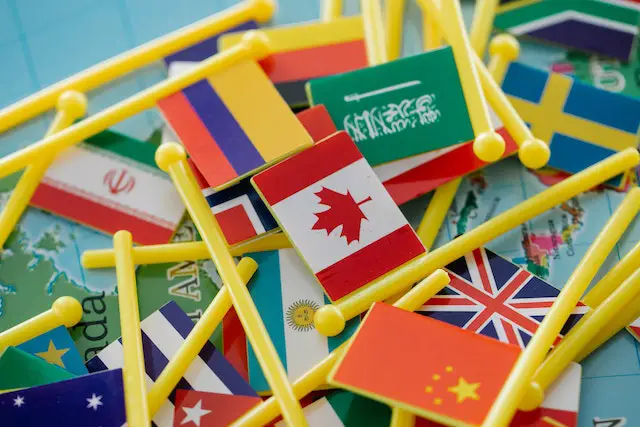Continents are natural formations with no political boundaries or governing bodies, countries are defined by their sovereignty and established governments.
TL;DR Continent Vs. Country
Continents are vast landmasses without political borders, whereas countries are political entities within continents with defined territories, governments, and cultures. Continents represent geographical divisions, while countries represent organized political entities with sovereignty.
Definition of a continent

A continent is a large and continuous expanse of land, surrounded by water on all sides. These colossal land masses play a crucial role in shaping the physical geography of our world.
What sets continents apart from other geographical features is their size and distinctiveness. They are typically comprised of multiple countries or regions within their boundaries, each with its own unique culture, history, and political structure. Continents serve as homes to diverse ecosystems, breathtaking natural wonders, and an array of human civilizations.
Definition of a country

A country is a geographical and political term that refers to a specific territory or region controlled by a government.
It is characterized by its own unique set of laws, customs, and traditions. Countries are recognized as sovereign entities with the ability to make their own decisions and govern themselves.
One key aspect of a country is its sovereignty, which means it has complete control over its internal affairs without interference from other nations. This includes the power to enforce laws, collect taxes, maintain an army, and engage in diplomatic relations with other countries.
Continent Vs. Country – Key Differences
Definition
- Continent: A continent is a large and continuous expanse of land, surrounded by water on all sides. It comprises several countries or regions with distinct characteristics.
- Country: A country is a specific territory or region controlled by a government. It is a political entity with its own set of laws, customs, and traditions.
Size and Scope
- Continent: Continents are massive landmasses covering a significant portion of the Earth’s surface. There are seven recognized continents on Earth.
- Country: Countries are smaller territorial units within continents. They can vary in size, population, and political structures.
Physical vs. Political
- Continent: Continents are natural formations with no political boundaries or governing bodies. They are defined by geographical features.
- Country: Countries are political entities with established governments and defined borders that separate them from other countries.
Sovereignty
- Continent: Continents do not have sovereignty; they are geographical divisions of the planet.
- Country: Countries are sovereign entities with the authority to govern themselves independently.
Cultural Diversity
- Continent: Continents are characterized by diverse ecosystems, landscapes, and human civilizations, each contributing to the continent’s cultural richness.
- Country: Countries represent distinct cultural identities, languages, and traditions that make them unique on the global stage.
Number
- Continent: There are seven widely recognized continents – Africa, Antarctica, Asia, Europe, North America, Australia (sometimes referred to as Oceania), and South America.
- Country: The number of countries varies over time due to geopolitical changes, but there are around 195 countries in the world as of the latest count.
Level of Governance
- Continent: Continents do not have centralized governance structures; they are not governed as political entities.
- Country: Countries have governments responsible for making and enforcing laws, collecting taxes, and representing the country on the international stage.
The 7 continents of the world
| Continent | Area (Approximate) | Population (Approximate) |
|---|---|---|
| Africa | 30.2 million sq km | 1.34 billion |
| Antarctica | 14 million sq km | ~1,000 (mostly researchers) |
| Asia | 44.58 million sq km | 4.64 billion |
| Europe | 10.18 million sq km | 747 million |
| North America | 24.71 million sq km | 579 million |
| Australia (Oceania) | 8.5 million sq km | 42 million |
| South America | 17.84 million sq km | 430 million |
Image Credits
Featured Image By – Freepik
Image 1 By – rawpixel.com on Freepik
Image 2 By – Photo by Lara Jameson








